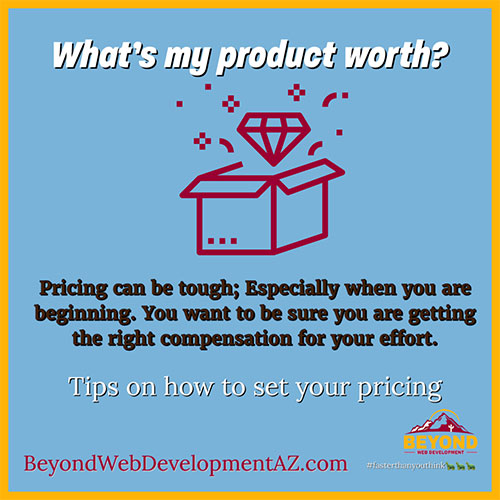Here are 5 ways to determine the price for your e-commerce product:
Introduction
What’s my product worth? A little game on pricing your product. Setting the right price for your e-commerce product is a crucial aspect of ensuring success in a competitive market. In this comprehensive guide, we’ll delve into five effective pricing strategies and supplement our insights with additional tips to help you navigate the complexities of pricing, considering factors such as costs, market trends, perceived value, and strategic bundling.
Cost-Based Pricing
Cost-based pricing involves calculating your total production and selling costs. This includes the cost of goods sold (COGS), marketing expenses, and overhead costs. Ensuring your price covers these costs and generates a profit is essential for the sustainability of your business.
Market-Based Pricing
Researching similar products in the market is key to market-based pricing. Analyze competitors and leverage price intelligence tools to position your product strategically, aligning with prevailing market prices and meeting the expectations of your target audience.
Value-Based Pricing
Understanding the perceived value of your product to customers is crucial in value-based pricing. Consider unique features, quality, and customer willingness to pay. Aligning your price with the value your product offers attracts customers who appreciate its distinct qualities.
Dynamic Pricing
Dynamic pricing, a more sophisticated strategy, adjusts prices in real time based on data and algorithms. This approach maximizes profits by responding to market fluctuations and consumer behavior.
Bundle Pricing
What are my products worth? Bundle pricing involves grouping multiple products together and offering them at a discounted rate. This strategy adds value for customers and can enhance your overall sales strategy.
Additional Game
Consider Your Profit Margins:
Ensure your price generates enough profit to cover costs and contributes to the financial health of your business.
Think About Your Target Market:
Understand what your target market is willing to pay for your product, aligning your pricing strategy with their expectations.
Research Your Competitors:
Analyze competitors’ pricing for similar products to position your offering effectively in the market.
Consider Your Brand Perception:
Reflect on whether your brand is perceived as luxury or budget, and let your price align with that perception.
Test Different Prices:
Experiment with various price points to identify what resonates best with your customers, adapting your strategy accordingly.
Flexibility Over Time:
Remember that your pricing strategy is not set in stone. Regularly reassess and adapt your prices based on market conditions, customer feedback, and other factors.
Conclusion
Mastering the art of pricing requires a combination of strategic thinking, market awareness, and flexibility. By implementing the discussed pricing strategies and incorporating additional tips, you can navigate the e-commerce landscape with confidence. Remember, your pricing strategy is an evolving aspect of your business, so stay proactive and responsive to market dynamics for sustained success.

